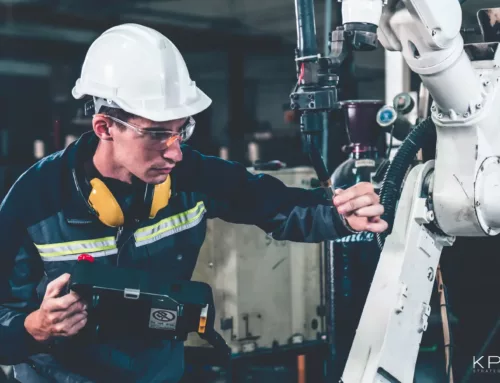The concept of “standard work” often conjures images of manufacturing floors and meticulous process flows. But what if the same principles that bring consistency and efficiency to production could be applied to leadership itself? This is the essence of Leader Standard Work (LSW), a powerful yet often misunderstood component of the Lean methodology. If you’re a leader, manager, or continuous improvement professional seeking to move beyond reactive management, struggling to embed lean principles effectively, or aiming to cultivate a truly stable and continuously improving organization, then understanding and implementing LSW is not just beneficial—it’s transformative. This article will unpack LSW, revealing how it elevates leadership from an art to a disciplined science, ensuring that critical leadership behaviors are not left to chance but are consistently executed to drive measurable results and foster a culture of excellence.
Main Takeaways From This Article:
What is Leader Standard Work (LSW)?
At its core, Leader Standard Work (LSW) is the application of Lean principles to the daily routines and practices of leaders at all levels. It’s about bringing the discipline and predictability of standardized work, typically seen on the production floor, to the critical behaviors of management. Instead of leaving leadership activities to chance or reactive problem-solving, LSW defines, documents, and ensures the consistent execution of key tasks that support operational stability and continuous improvement.
Think of it this way: how do you truly improve an organization’s performance? By improving the behaviors of its leaders. LSW provides the framework for leaders to proactively engage in activities that foster a culture of excellence. This includes regular “gemba walks” (visiting the actual workplace), conducting structured team meetings, coaching employees, identifying deviations from standards, and championing problem-solving efforts. It’s not about adding more to a leader’s plate, but rather optimizing existing activities and making them more intentional and impactful.
The beauty of LSW lies in its simplicity and profound effect. It transforms abstract leadership ideals into concrete, repeatable actions. By establishing a clear rhythm of essential leadership behaviors, LSW helps to sustain improvements, reinforce desired practices, and ensure that the focus remains on delivering value to the customer. It’s the practical answer to how leaders can consistently drive daily improvement, moving beyond simply discussing strategy to actively embedding it within the organization’s operational DNA.
The Principles of Leader Standard Work in Strategy Development
Leader Standard Work (LSW) is far more than a tool for daily management; it’s a critical mechanism for embedding strategic objectives into the very fabric of an organization’s leadership actions. By standardizing key leadership behaviors, LSW ensures that every leader’s routine directly supports and reinforces the broader organizational strategy, translating high-level goals into consistent, actionable practices.
Standardized Work
Standardized work involves defining the best, safest, and most efficient way to perform a task, then documenting and consistently following that method. Applied to leadership, this means codifying essential leadership activities—such as how and when to conduct a gemba walk, review key performance indicators, or coach team members. By standardizing these leadership tasks, organizations significantly reduce variability in how leaders operate, promoting consistency across all teams and ensuring that critical management behaviors are consistently executed to support strategic goals.
Daily Routines
Effective LSW necessitates that leaders establish and adhere to robust daily routines focused on value-adding activities. These routines might include structured morning check-ins with teams to review progress and obstacles, dedicated time for goal reviews to ensure alignment with strategic priorities, and scheduled one-on-one coaching sessions to develop team capabilities. By embedding these critical activities into their daily schedules, leaders create a predictable rhythm that fosters stability, facilitates proactive problem-solving, and ensures continuous attention to strategic execution.
Visual Management
Visual management tools, such as performance dashboards, strategy deployment matrices, and production control charts, are indispensable to LSW. These tools provide real-time visibility into key performance indicators, project progress, and strategic objectives, making deviations immediately apparent. By leveraging visual cues, leaders can quickly assess the health of their operations, identify areas needing attention, and ensure that all team members are aligned with current objectives and the overall strategic direction.
Continuous Improvement (Kaizen)
LSW inherently promotes a mindset of continuous improvement, or Kaizen, within leadership practices. Leaders are encouraged to regularly reflect on the effectiveness of their own standardized work, questioning established routines and actively seeking ways to optimize their processes. This iterative approach ensures that LSW remains dynamic and responsive, continually evolving to better support the organization’s strategic needs and foster an ongoing culture of learning and operational excellence.
Accountability and Ownership
Crucial to the success of LSW is the establishment of clear expectations for leaders and a strong emphasis on individual accountability and ownership. Leaders must commit to consistently following their defined standardized work and holding themselves responsible for the outcomes. This involves not only adhering to the routines but also actively addressing deviations, tracking progress against strategic goals, and fostering a culture where every leader takes personal ownership for driving results and sustaining the practices of Leader Standard Work.
Benefits of Leader Standard Work
Benefits of Leader Standard Work
Leader Standard Work (LSW) is indispensable for elevating both individual leader effectiveness and overall organizational success. By embedding disciplined routines, LSW ensures leaders consistently drive performance, foster stability, and align actions with strategic goals.
Increased Efficiency
Standardizing leadership tasks dramatically boosts efficiency. It cuts down on confusion and eliminates duplicated efforts. Leaders waste less time on ad-hoc activities. This streamlined approach allows more focus on value-added work.
Consistency in Leadership
LSW ensures that leadership actions remain consistent. This predictability builds strong trust within teams. It also promotes a stable and reliable work environment. Team members know what to expect from their leaders.
Alignment with Business Objectives
Furthermore, LSW helps leaders align daily activities with larger organizational goals. It translates high-level strategies into actionable routines. This ensures every leadership effort supports the broader business objectives. Clear alignment drives focused progress.
Improved Team Performance
Ultimately, LSW leads to better team performance. Leaders become more focused and organized. They are also more proactive in supporting their teams. This consistent support empowers teams to achieve their goals.
Enhanced Employee Engagement
Moreover, leaders practicing LSW are better communicators. They effectively motivate and engage their teams. This leads to higher levels of employee satisfaction. It also contributes to better employee retention.
Support for Continuous Improvement
Finally, LSW is crucial for continuous improvement. It encourages regular reflection on processes. Leaders constantly seek ways to enhance workflows. This commitment builds a true culture of Kaizen.
Top Tools for Team Leaders
To effectively implement Leader Standard Work, team leaders can leverage several key tools that help standardize processes, improve communication, and drive continuous improvement. These tools provide structure, accountability, and clarity to ensure that daily leadership tasks align with organizational goals.
- Huddle meetings: A daily stand-up meeting for team communication, collaboration, and updates.
- Gemba Walks or Leader process walks: Going to the Gemba—where the work occurs to understand the process and identify improvement opportunities.
- Huddle boards: A visual management tool to track leader actions related to supporting a lean culture.
- Process Performance Boards: A process scorecard for your team incorporating safety, quality, cost, and delivery.
- Leader Standard Work Checklist Template: a checklist of the tasks you should do as a leader on a Daily, Weekly, Monthly interval.
Best Practices for Implementing Leader Standard Work
Implementing Leader Standard Work (LSW) effectively requires a structured approach and a commitment to foundational Lean principles. By adopting these best practices, organizations can ensure LSW is a powerful driver of continuous improvement and operational excellence.
Define Key Leadership Responsibilities
Begin by clearly defining the daily, weekly, and monthly tasks and responsibilities for each leader. These tasks must directly align with the critical metrics that drive the team’s success. Leaders need to meticulously balance both leading indicators, which predict future performance, and lagging indicators, which show past results. This careful balance ensures that leadership actions are both proactive and responsive, guiding the team towards sustainable improvement.
Design Metrics that Matter
Metrics form the absolute foundation of effective Leader Standard Work. Leaders must carefully select SMART (Specific, Measurable, Achievable, Relevant, Time-bound) performance metrics that are tightly linked to broader organizational goals. These metrics should enable continuous monitoring and facilitate rapid course corrections when deviations occur. By focusing on the right data, these metrics will consistently guide the daily work of leaders and keep every team member focused on the most important priorities.
Integrate the “Go and See” Approach
A cornerstone of Lean, the “Go and See” (Gemba) approach is vital for LSW. Leaders must consistently leave their offices and visit the Gemba—the actual place where work is performed. By observing processes firsthand and engaging with frontline team members, leaders can identify subtle inefficiencies and process gaps. These valuable insights are often invisible in reports or during formal meetings, providing a deeper understanding for genuine improvement.
Conduct Effective Huddles
Daily huddles are a critical, dynamic part of Leader Standard Work. To maximize their effectiveness, huddles must be concise and keenly focused on key actions and immediate obstacles. Leaders ensure every team member has crystal-clear clarity on their tasks and responsibilities. Any emerging issues or impediments are quickly identified and addressed, preventing minor problems from escalating into larger challenges.
Use A3 Problem-Solving and the “5 Whys”
Systematic problem-solving is a core tenet of Leader Standard Work. The A3 problem-solving methodology helps leaders identify the true root causes of issues by breaking down complex problems methodically. Complementing this, the “5 Whys” technique guides leaders in asking iterative questions to peel back layers and uncover the fundamental cause of a problem. Using these robust tools promotes better decision-making and actively fosters a strong culture of continuous improvement throughout the organization.
Show Respect and Encourage Kaizen
A crucial and often overlooked aspect of Leader Standard Work is cultivating a culture of deep respect and continuous improvement. Leaders must consistently demonstrate respect for their team’s efforts and insights. This is especially true for initiatives like 5S (workplace organization) and Kaizen (small, continuous improvements). By valuing team contributions, leaders empower employees to identify problems and propose solutions, embedding a collaborative spirit of ongoing optimization.
How Key Performance Indicators & KPI Fire Help Leader Standard Work
KPI Fire’s Strategy Execution Software is specifically designed to empower leaders in implementing robust Leader Standard Work practices. It provides a centralized, visual platform that streamlines strategic alignment, performance tracking, and continuous improvement efforts.
- Real-Time Performance Monitoring: KPI Fire’s real-time dashboards allow leaders to track progress on key performance indicators instantly. This makes it significantly easier to stay aligned with organizational goals and identify deviations swiftly.
- Streamlined Workflows: The software helps standardize leadership workflows by automating routine tasks and offering clear templates for leaders to follow. This reduces administrative burden, allowing leaders to focus on high-value activities.
- Accountability Tools: KPI Fire includes built-in accountability features, such as automated reminders and structured check-ins for tasks and projects. These tools are crucial for ensuring consistency in leader practices and fostering a culture of ownership.
- Continuous Improvement Support: KPI Fire actively fosters continuous improvement by providing leaders with actionable insights derived from data. This empowers them to continuously refine their strategies, optimize processes, and drive sustained performance enhancements.
Implement Leader Standard Work with KPI Fire for Long-Term Success
Leader Standard Work (LSW) is a powerful Lean methodology that brings discipline and consistency to leadership behaviors. It defines and standardizes the critical routines leaders perform daily, ensuring they proactively engage in activities that drive operational stability, continuous improvement, and strategic alignment. The benefits are profound: increased efficiency, consistent leadership, stronger alignment with business objectives, improved team performance, and enhanced employee engagement. Implementing LSW effectively involves defining key responsibilities, designing meaningful metrics, integrating “Go and See” observations, conducting effective huddles, and employing robust problem-solving tools like A3 and the “5 Whys,” all while fostering a culture of respect and Kaizen.
Adopting LSW isn’t just about theory; it’s about practical, consistent action that transforms leadership effectiveness and organizational outcomes. To truly embed these practices and ensure long-term success, leveraging the right technology is crucial. KPI Fire’s Strategy Execution Software is specifically designed to support leaders in this journey, offering real-time performance monitoring, streamlined workflows, powerful accountability tools, and continuous improvement support. Request a demo of KPI Fire today to see how it centralizes your metrics and provides the visibility needed to make LSW an indispensable part of your daily operations. If you’re ready to standardize your leadership practices and see a tangible improvement in team performance, take the next step now.




